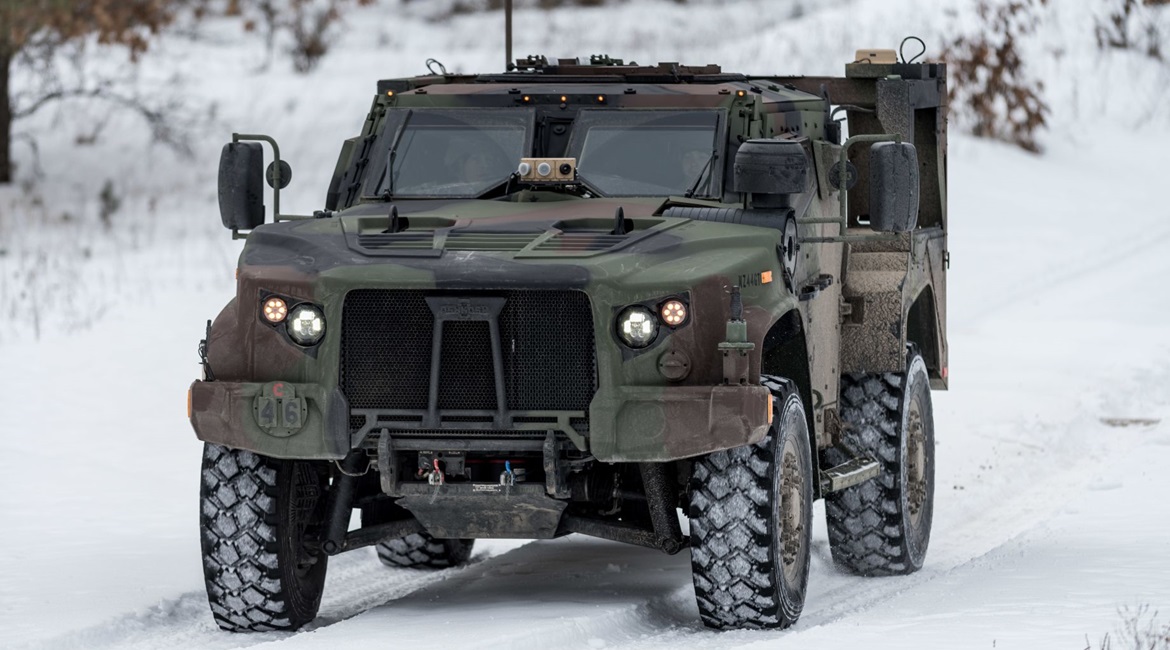
The US Air Force’s (USAF’s) chief of staff sees the US military services better collaborating on weapon systems if future defence spending declines due to the novel coronavirus (Covid-19).
“As budgets now get tighter, which is the expectation of the future, we are going to have to take a hard look…at where we have duplication and where we have the ability for better collaboration,” General David Goldfein told reporters on 1 April during a Mitchell Institute for Airpower Studies event.

A Joint Light Tactical Vehicle (JLTV) in operation on 29 January. The JLTV is an example of US military service collaboration on weapon systems, which the US Air Force's chief of staff sees taking place more often as defence budgets potentially decline due to Covid-19 spending. (US Department of Defense) (US Department of Defense)
One example he gave was the development of hypersonic weapons. The US services and the Missile Defense Agency (MDA) are already working together on a joint hypersonic armament called the Common Hypersonic Glide Body (C-HGB). The US Navy (USN) and US Army are working with industry to develop the weapon with the USN serving as the lead designer and the US Army as the lead for production.
The Pentagon’s fiscal year (FY) 2021 budget discretionary budget request is unlikely to be affected by the Covid-19 outbreak, but responses to the virus and its economic effects are likely to increase US public debt and potentially hit budgets in the longer-term. The US already passed a roughly USD2 trillion stimulus package to try to thwart off a potential recession from stay-at-home ordinances being enacted in many states and additional stimulus packages are possible.
Bryan Clark, senior fellow at the Hudson Institute think tank in Washington, DC, told Jane’s
Looking to read the full article?
Gain unlimited access to Janes news and more...






